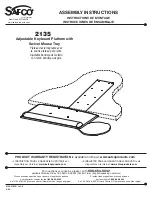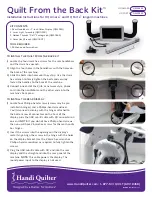
e
v
o
e
v
o
e
v
o
ATTENTION :
■
The BUMP’AIR must
neither be too com-
pressed nor able to «float about» in
the area intended for it.
■
The attachment of the BUMP’AIR
to the harness may be done by
using lateral strips of Velcro
®
(see
diagram). In this case the Velcro
®
strips must be attached without any
tension.
■
The BUMP’AIR 20 or the
BUMP’AIR 17 Plus are simply
slotted into their space. We recom-
mend the BUMP’AIR 20 for size XL
and XXL harnesses.
■
The BUMP’AIR 17 and 17 Plus
are suitable for all other types of
harness.
The BUMP’AIR model recom-
mended for each new SUP’AIR har-
ness is indicated in its handbook.
I N S E R T I N G
T H E
B U M P ’A I R I N T H E
HARNESS
At hip level there are two Velcro
®
strips which stop the BUMP’AIR 17
slipping.
These strips must be
adjusted so as to leave a little
space between the protection
and the pilot’s back.
If your har-
ness is not equipped with Velcro
®
strips for fixing the protection, it
is necessary to make sure that the
protection cannot move, otherwise
there could be the risk that the pilot
could slip beyond the protection in
the case of a landing in a sitting
position.
OPERATION, INSTALLATION AND WARNING RELATING TO
THE SUP’AIR «PERMANENT AIRBAG» PROTECTION SYSTEM
The BUMP’AIR “permanent airbag”
protections made by SUP’AIR for
harnesses are compatible with
most recent harnesses, provided
there is adequate space available in
the back of the harness.
It is important that the BUMP’AIR
is not compressed in normal use,
and that it does not reduce the seat
area.
It is also necessary to check that the
protection is appropriately fixed in
a central position in such a way that
it will not move.
If the Bump’air is correctly posi-
tioned and of the correct size, it
should have no effect on the com-
fort of the harness.
OPERATION
The BUMP’AIR made by SUP’AIR is
a real “permanent airbag” (infla-
table cushion). Its function is
similar to that of a car airbag. The
kinetic energy of a fall is smoothly
absorbed by the air escaping pro-
gressively through the seams. The
BUMP’AIR “permanent airbag” is
kept inflated by foam which springs
back to its original shape, thus
ensuring that it is always ready.
The adiabatic curve for the air
when it is being compressed is such
that the cushioning effect increases
smoothly.
Naturally, a “permanent airbag”
protection system cannot comple-
tely eliminate the risk of injury
resulting from a fall, but they can
help to reduce their frequency and
seriousness. Never forget that the
best landing gear is still a pair of
human legs!
INSTALLATION OF THE
BUMP’AIR
Simply slide the protection into the
space for it under the base plate and
behind the back support. It is then
necessary to check that the protec-
tion has all the space that it needs
and that deployment of the reserve
parachute is not hindered, and that
the pilot is seated in a comfortable
position which enables him to fly
correctly.
If any straps cross the space where
the protection is to be installed,
check that these straps are on the
pilot’s side i.e. that the protection is
NOT inserted between the pilot and
the straps.
SI V ( SI M U L AT ION OF F LY I NG PROBL E MS )
AND FLYING OVER WATER
Do not under any circumstances use any air-based protection (Bumpair,
Cygnus-type Airbag, or Airtec) if there is any risk that you will land in
water. If you land in water using a BUMP’AIR, there is a real danger that its
buoyancy under the base plate and behind the pilot’s back lead to the pilot’s
head being held under water.
During SIV or flying over water, we recommend the use of a life-jacket
equipped with a collar which will keep the pilot’s head above water in the
case of loss of consciousness.
WHAT SHOULD BE CHECKED AFTER HEAV Y
LANDING?
The BUMP’AIR functionalities should, in theory, stay intact even after
a heavy landing. This has been verified in tests. The BUMP’AIR is not a
«throw-away» product. Do not hesitate to check that the seams and the
material have not been damaged: a tear will seriously reduce the efficiency
of the product
.
TRANSPORT, STORAGE AND CARE FOR YOUR
BUMP’AIR PERMANENT AIRBAG
You can remove your BUMP’AIR from the harness and roll it up, which redu-
ces its volume by about 30%, when you wish to take it elsewhere.
You can then secure the roll using a Velcro
®
strip.
Before take-off, the BUMP’AIR must be unrolled for a few minutes to inflate
to its usual size and total efficiency.
For longer-term storage, the BUMP’AIR must be left uncompressed in a dry
place.
T A N D E M F L I G H T S U S I N G B U M P ’ A I R
PROTECTIONS
For tandem flying, and especially when both pilot and passenger are equip-
ped with a BUMP’AIR made by SUP’AIR, it is necessary to use spreaders to
ensure that there is some distance between them.
The pilot and the passenger must be able to fly in a comfortable position
and not get in each other's way. This must be checked before flight, hanging
from the spreaders that will be used for the flight.
7
6
7
6
D
E
U
T
SC
H
F
R
A
N
C
IA
IS
IT
A
L
IA
N
E
SP
A
Ñ
O
L
JA
P
O
N
A
IS
E
N
G
L
IS
H

































